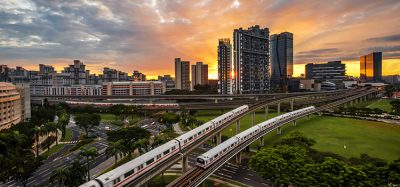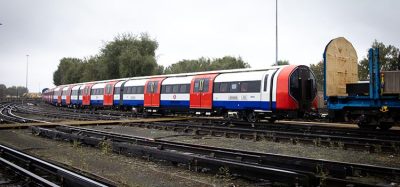Catching up…
Posted: 2 March 2005 | | No comments yet
In every recent statistic about wealth and world markets, Luxembourg can be found in the top slot of GDP per capita listings, making Luxembourgers, at least in theory, somewhat wealthy people. As can be expected from this statistic, individual transportation is at an all-time high. This, in combination with Luxembourg’s limited territorial assets, gives our country the problem of over-saturation of public roads. A single road repair on a motorway can lock up traffic around Luxembourg City quite efficiently on work-day mornings and seriously delay commuters.
In every recent statistic about wealth and world markets, Luxembourg can be found in the top slot of GDP per capita listings, making Luxembourgers, at least in theory, somewhat wealthy people. As can be expected from this statistic, individual transportation is at an all-time high. This, in combination with Luxembourg’s limited territorial assets, gives our country the problem of over-saturation of public roads. A single road repair on a motorway can lock up traffic around Luxembourg City quite efficiently on work-day mornings and seriously delay commuters.
In every recent statistic about wealth and world markets, Luxembourg can be found in the top slot of GDP per capita listings, making Luxembourgers, at least in theory, somewhat wealthy people.
As can be expected from this statistic, individual transportation is at an all-time high. This, in combination with Luxembourg’s limited territorial assets, gives our country the problem of over-saturation of public roads. A single road repair on a motorway can lock up traffic around Luxembourg City quite efficiently on work-day mornings and seriously delay commuters.
For this reason, public pressure on our political decision-makers to act urgently on the improvement of public transportation has greatly increased over the last decade. Up until now, CFL has mostly run on post-war material and track infrastructure, as there was no real need for upgrading. This has changed radically, when many of our long overdue investments have finally been sanctioned.
Our pet project over the last five years has been the complete rebuilding of the passenger and freight fleet. Urgent acquisitions were made and by the end of 2005 we will finally have replaced all of our vintage traction engines and passenger coaches with (mostly) double-decker material. Since June 2004, the first deliveries have come in regularly and have been put into service as fast as possible. Our passengers did experience a kind of a culture shock when the first double-deckers came publicly unannounced into service. Ever since, passenger numbers and customer satisfaction have substantially increased. By the end of 2006, when all running contracts will be fulfilled, CFL will be the proud operator of one of the youngest passenger fleets in Europe, with an average age of six years. Through these improvements alone, we are confident to come a lot closer to the required modal split of 25/75.
This modal split has been formulated in a national improvement plan on public transport called ‘Mobilitéit.lu’. Since the last governmental election this conceptual plan has been validated and integrated into the IVL (Intergratives Verkehrs- und Landesplanungskonzept) – Luxembourg’s version of a 25-year development plan to manage expected population and industrial growth inside Luxembourg.
On the infrastructure side of railway development, IVL put a few major projects on track, as the layout of national railways still dates from the immediate post-war era. The latest big investment in this respect was the electrification of the ‘North-line’, the main line between Luxembourg City, the north of the country and Belgium, finished in the early 1980s.
We are proud to be one of the few railway companies in Europe who are massively investing in projects that are not high speed lines or prestige objects. On the other hand, I unfortunately also have to admit that we do have to catch up a certain backlog of inactivity in this domain.
Construction began in November on the Pétange-Luxembourg line to eventually convert it to a double-lane track. This will lighten the load of the line, which is nowadays running frighteningly close to 100% capacity and allows CFL to run a greater number of trains to the south of the country on an optimised schedule, thus bringing us again one step closer to a well organised public transportation system.
Another huge project waiting in the starting blocks is a rail connection of Kirchberg, the European and banking centre of Luxembourg City to the central station. This multi-million Euro project will hopefully eliminate the need to pass by bus or by car through the city centre in order to access Kirchberg. The planning foresees construction beginning in 2006 and inauguration of the connection by the end of 2009.
Along with the development of our network and rebuilding of our fleet, we are also modernising our on-site repair and maintenance facilities to be able to cope with the new material. Construction of our new workshop began in November. By the end of 2009 we will be able to express-service most of the European traction engines, even high speed trains such as the TGV. This last element also allows for a perfect transition to another investment CFL are pursuing, namely installing together with SNCF a four-times-a-day TGV service between Luxembourg and Paris. CFL are in the finishing phase of the studies and we are confident to close the project by mid-2007. By this time we will have our tracks and train stations modified according to TGV standards.
These projects, being mostly infrastructure and thus government funded and supported, are putting CFL in a good position in the greater regions’ public transport area. Almost every corner of Luxembourg and its surroundings will be accessible by train, if not directly, then at least connected through a short bus ride to the nearest station. Rising fossil fuel prices and very affordable public transport tickets will do the rest and bring even more people into modern, reliable and comfortable trains.
Another aspect of infrastructure is to upgrade our rail security system sometime in the near future to the new European ETCS. A first functional test track is operational between Ettelbruck and Mersch, a part of the North-line. A few CFL engines are already equipped with ETCS, the rest will follow. In the first phase, CFL will only use the security aspect of ETCS Level 1; signals will still be the only source of traffic information for the driver.
CFL is not only active in passenger transportation business – our freight department (while not being a global player) also profits from liberalisation. Unfortunately, unfair competition from road-based freight companies puts railway freight transportation throughout Europe through a tough test. Even while the situation will not change radically without the support of a powerful lobby, CFL are doing their best to stay competitive. To this effect, we have been restructuring our internal freight organisation and are looking confidently ahead, as first results are promising.
Our geographical situation in the heart of Europe and on the main axis between Antwerp and northern Italy gives us an obvious strategic advantage for freight transport, a chance we will not easily let go by. In our case, freight liberalisation is a welcome development and first experiences, which were made in Germany, were better than expected.
Of course CFL are not big enough to take a leading role in either freight or passenger transport throughout Europe, but are definitely confident and ambitious enough to take on the challenge of being an all-round and highly competitive operator in the greater Luxembourg region and a reliable partner beyond. Investments into a bright future are being made – a strategy, which I am sure, will pay off.
OUT NOW: The Definitive Guide to Rail’s Digital Future
The rail industry is undergoing a digital revolution, and you need to be ready. We have released our latest market report, “Track Insight: Digitalisation.”
This is not just another report; it’s your comprehensive guide to understanding and leveraging the profound technological shifts reshaping our industry. We move beyond the buzzwords to show you the tangible realities of AI, IoT, and advanced data analytics in rail.
Discover how to:
- Optimise operations and maintenance with real-time insights.
- Enhance passenger services through seamless, high-speed connectivity.
- Leverage technologies like LEO satellites to improve safety and efficiency.
Featuring expert analysis from leaders at Nomad Digital, Lucchini RS, Bentley Systems and more, this is a must-read for any rail professional.







